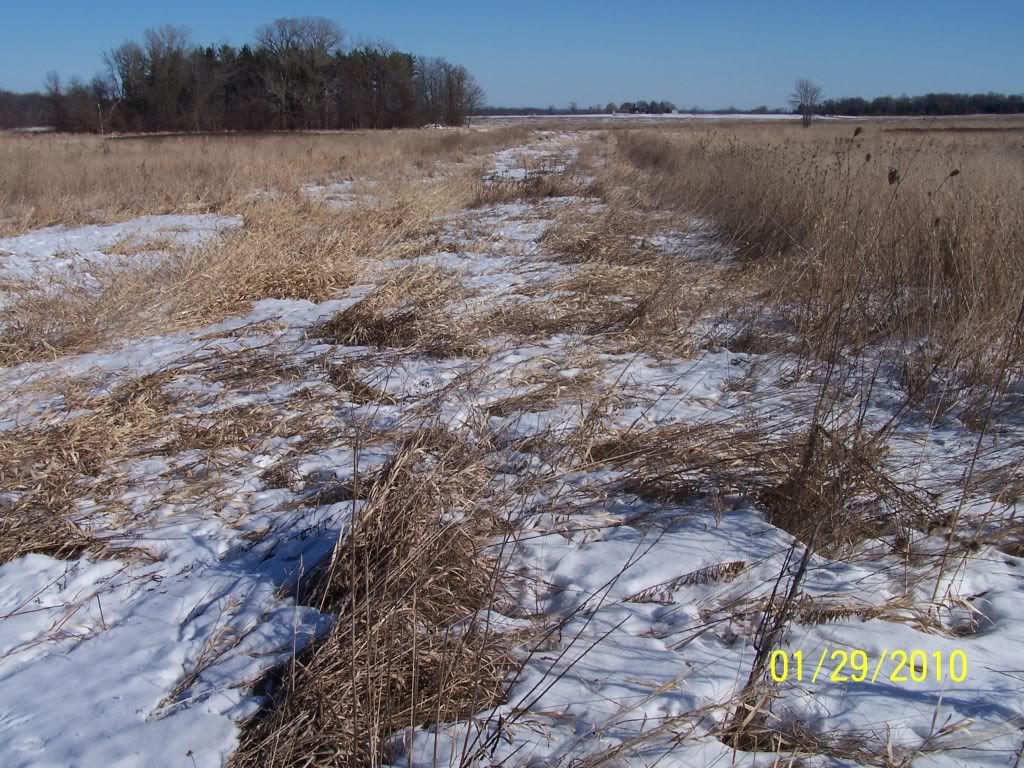I have a TRICKY situation with some switchgrass...
I have AREAS amongst 40 acres that are SO sparse it's unreal- all established and planted the same way & at same time. Other areas as thick as can be. This is AFTER I reseeded them and sprayed with Atrazine- this was INTERSEEDING on established switch. The tricky part is some of the areas are on low lying crop land and other sparse areas on some slightly hilly stuff. SO- I don't think flooding is the problem. I am not sure if it could be soil quality? I noticed this recently- one thing it also COULD have been was thicker foxtail in these areas over the summer I just didn't notice (now it's under snow SO it just looks bare).
The reason I put under Native Grasses and not switchgrass- I am thinking of trying to add some Big Blue or possibly Indian to the bare areas. YET- one bare area was planted with some Indian and Big Blue and still very sparse.
QUESTIONS:
-Think it's a soil quality or areas that are too wet and NOTHING I could do will get them going? Can't figure out why these random spots are bare or sparse?!?!!?
-Should I let it go this year (last year was the frost seeding with Atrazine, etc (no atrazine on new Indian grass of course)) and just see what happens, maybe it will come in better???
-What would you do with these sparse areas? Let it go another year, plant to beans to start over, frost seed CIR/BB/Indian, more atrazine, plant to trees, etc, etc???? Maybe one type of NWSG would be a choice to try in my wierd circumstance?
-Lastly, I know that Alfalfa has auto-immune traits to kill new alfalfa and Switchgrass obviously does NOT but i have heard of this occuring in switchgrass, anyone else ever heard of such a thing (Osenbaugh's had mentioned this and toyed with idea of starting over)? I do also have black spots all over CIR- diseased?
Thanks a ton!!!!
I have AREAS amongst 40 acres that are SO sparse it's unreal- all established and planted the same way & at same time. Other areas as thick as can be. This is AFTER I reseeded them and sprayed with Atrazine- this was INTERSEEDING on established switch. The tricky part is some of the areas are on low lying crop land and other sparse areas on some slightly hilly stuff. SO- I don't think flooding is the problem. I am not sure if it could be soil quality? I noticed this recently- one thing it also COULD have been was thicker foxtail in these areas over the summer I just didn't notice (now it's under snow SO it just looks bare).
The reason I put under Native Grasses and not switchgrass- I am thinking of trying to add some Big Blue or possibly Indian to the bare areas. YET- one bare area was planted with some Indian and Big Blue and still very sparse.
QUESTIONS:
-Think it's a soil quality or areas that are too wet and NOTHING I could do will get them going? Can't figure out why these random spots are bare or sparse?!?!!?
-Should I let it go this year (last year was the frost seeding with Atrazine, etc (no atrazine on new Indian grass of course)) and just see what happens, maybe it will come in better???
-What would you do with these sparse areas? Let it go another year, plant to beans to start over, frost seed CIR/BB/Indian, more atrazine, plant to trees, etc, etc???? Maybe one type of NWSG would be a choice to try in my wierd circumstance?
-Lastly, I know that Alfalfa has auto-immune traits to kill new alfalfa and Switchgrass obviously does NOT but i have heard of this occuring in switchgrass, anyone else ever heard of such a thing (Osenbaugh's had mentioned this and toyed with idea of starting over)? I do also have black spots all over CIR- diseased?
Thanks a ton!!!!
Last edited:









